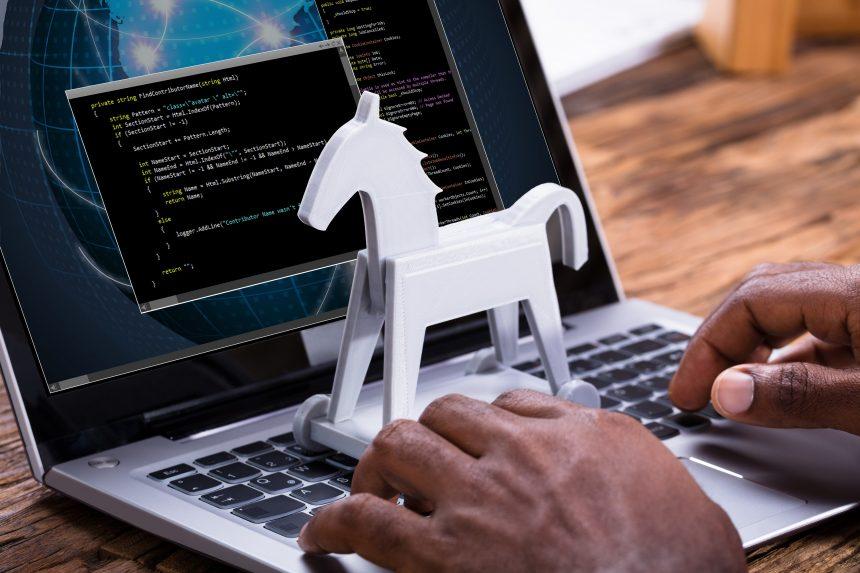BurnsRAT, a sophisticated Remote Administration Trojan (RAT), represents a significant threat in the cybersecurity landscape. Designed to provide cybercriminals with unauthorized access to infected devices, BurnsRAT facilitates activities ranging from data theft to the deployment of additional malicious payloads. This article delves into BurnsRAT’s operations, impact, and distribution tactics while offering actionable solutions to remove the threat and prevent future infections.
Remove annoying malware threats like this one in seconds!
Scan Your Computer for Free with SpyHunter
Download SpyHunter now, and scan your computer for this and other cybersecurity threats for free!
BurnsRAT: A Silent Operator in Attack Chains
BurnsRAT is frequently utilized as a critical component in broader cyberattack campaigns. By granting attackers remote access to compromised systems, it operates covertly, often serving as the entry point for further malicious activities. These include deploying ransomware, spyware, and information stealers, making BurnsRAT an integral tool in the arsenal of cybercriminals.
Victims of BurnsRAT face severe consequences, including identity theft, financial fraud, and exposure to phishing campaigns orchestrated with their own stolen data. Its role in facilitating data breaches highlights its utility as a versatile weapon for hackers.
BurnsRAT’s Role in Data Exploitation
BurnsRAT’s primary function is to harvest sensitive information, including:
- Login credentials
- Financial details
- Identification documents
This stolen data is often sold on underground markets or used to conduct spear-phishing attacks. Additionally, BurnsRAT acts as a precursor to ransomware attacks, encrypting victim data and demanding a ransom for decryption. Even if paid, attackers often fail to restore access, compounding the victim’s losses.
Stealthy Deployment Tactics
BurnsRAT’s deployment involves a multi-stage attack characterized by deception. The malware is often delivered through phishing emails containing malicious JavaScript files disguised as legitimate documents, such as procurement requests. Once executed, the JavaScript file downloads additional malicious components, including:
- A decoy document
- An auxiliary script
- The primary payload (BLD.exe)
The BLD.exe file executes a DLL side-loading attack, exploiting legitimate software to load malicious DLL files. This method bypasses standard security measures, allowing attackers to maintain control over infected systems undetected.
The Multifaceted Danger of RATs
Remote Administration Trojans like BurnsRAT are formidable due to their versatility. Capable of data theft, espionage, and system sabotage, BurnsRAT’s stealth makes it a high-risk threat. Its ability to facilitate ransomware attacks and exfiltrate sensitive corporate information further emphasizes the importance of proactive cybersecurity measures.
Comprehensive Guide to Removing BurnsRAT
Remove annoying malware threats like this one in seconds!
Scan Your Computer for Free with SpyHunter
Download SpyHunter now, and scan your computer for this and other cybersecurity threats for free!
Removing BurnsRAT requires a robust anti-malware solution such as SpyHunter. Here’s a step-by-step guide:
Step 1: Download and Install SpyHunter
- Visit the official SpyHunter website and download the software.
- Follow the installation instructions to set up the tool on your device.
Step 2: Perform a Full System Scan
- Open SpyHunter and initiate a full system scan.
- The tool will identify BurnsRAT and other malicious components.
Step 3: Remove Detected Threats
- After the scan, review the detected threats.
- Select BurnsRAT and any associated files for removal.
- Click the “Fix Threats” button to eliminate the malware.
Step 4: Restart and Re-scan
- Restart your device to complete the cleanup process.
- Run another full system scan to ensure all traces of BurnsRAT have been removed.
Preventive Measures to Avoid Future Infections
- Update Software Regularly: Ensure your operating system and applications are updated to patch vulnerabilities.
- Educate Employees: Train users to recognize phishing emails and avoid opening suspicious attachments.
- Use Advanced Security Solutions: Employ anti-malware tools like SpyHunter to detect and neutralize threats.
- Restrict Permissions: Limit administrative privileges on devices to reduce the risk of unauthorized installations.
- Enable Firewalls: Use firewalls to monitor and block unauthorized access to your network.
- Regular Backups: Maintain up-to-date backups of critical data to minimize the impact of potential attacks.
Conclusion
BurnsRAT exemplifies the evolving sophistication of cyber threats. Its ability to infiltrate systems, evade detection, and cause extensive damage underscores the need for robust cybersecurity practices. By understanding its tactics and implementing proactive measures, individuals and organizations can protect themselves against this formidable threat.





